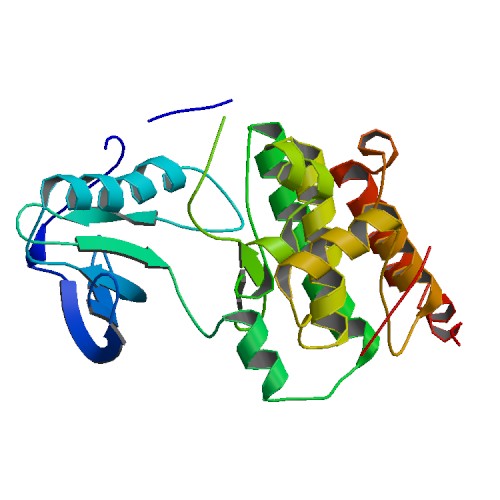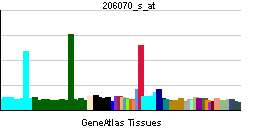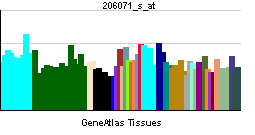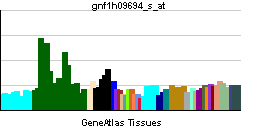EPHA3
| EPH receptor A3 | |||||||||||||
|---|---|---|---|---|---|---|---|---|---|---|---|---|---|
 PDB rendering based on 2gsf. | |||||||||||||
| |||||||||||||
| Identifiers | |||||||||||||
| Symbols | EPHA3 ; ETK; ETK1; HEK; HEK4; TYRO4 | ||||||||||||
| External IDs | Template:OMIM5 Template:MGI HomoloGene: 21083 | ||||||||||||
| |||||||||||||
| RNA expression pattern | |||||||||||||
 | |||||||||||||
 | |||||||||||||
 | |||||||||||||
| More reference expression data | |||||||||||||
| Orthologs | |||||||||||||
| Template:GNF Ortholog box | |||||||||||||
| Species | Human | Mouse | |||||||||||
| Entrez | n/a | n/a | |||||||||||
| Ensembl | n/a | n/a | |||||||||||
| UniProt | n/a | n/a | |||||||||||
| RefSeq (mRNA) | n/a | n/a | |||||||||||
| RefSeq (protein) | n/a | n/a | |||||||||||
| Location (UCSC) | n/a | n/a | |||||||||||
| PubMed search | n/a | n/a | |||||||||||
EPH receptor A3, also known as EPHA3, is a human gene.[1]
This gene belongs to the ephrin receptor subfamily of the protein-tyrosine kinase family. EPH and EPH-related receptors have been implicated in mediating developmental events, particularly in the nervous system. Receptors in the EPH subfamily typically have a single kinase domain and an extracellular region containing a Cys-rich domain and 2 fibronectin type III repeats. The ephrin receptors are divided into 2 groups based on the similarity of their extracellular domain sequences and their affinities for binding ephrin-A and ephrin-B ligands. This gene encodes a protein that binds ephrin-A ligands. Two alternatively spliced transcript variants have been described for this gene.[1]
References
Further reading
- Flanagan JG, Vanderhaeghen P (1998). "The ephrins and Eph receptors in neural development". Annu. Rev. Neurosci. 21: 309–45. doi:10.1146/annurev.neuro.21.1.309. PMID 9530499.
- Zhou R (1998). "The Eph family receptors and ligands". Pharmacol. Ther. 77 (3): 151–81. PMID 9576626.
- Ernst AF, Jurney WM, McLoon SC (1999). "Mechanisms involved in development of retinotectal connections: roles of Eph receptor tyrosine kinases, NMDA receptors and nitric oxide". Prog. Brain Res. 118: 115–31. PMID 9932438.
- Holder N, Klein R (1999). "Eph receptors and ephrins: effectors of morphogenesis". Development. 126 (10): 2033–44. PMID 10207129.
- Wilkinson DG (2000). "Eph receptors and ephrins: regulators of guidance and assembly". Int. Rev. Cytol. 196: 177–244. PMID 10730216.
- Xu Q, Mellitzer G, Wilkinson DG (2001). "Roles of Eph receptors and ephrins in segmental patterning". Philos. Trans. R. Soc. Lond., B, Biol. Sci. 355 (1399): 993–1002. doi:10.1098/rstb.2000.0635. PMID 11128993.
- Wilkinson DG (2001). "Multiple roles of EPH receptors and ephrins in neural development". Nat. Rev. Neurosci. 2 (3): 155–64. PMID 11256076.
- Wicks IP, Wilkinson D, Salvaris E, Boyd AW (1992). "Molecular cloning of HEK, the gene encoding a receptor tyrosine kinase expressed by human lymphoid tumor cell lines". Proc. Natl. Acad. Sci. U.S.A. 89 (5): 1611–5. PMID 1311845.
- Boyd AW, Ward LD, Wicks IP; et al. (1992). "Isolation and characterization of a novel receptor-type protein tyrosine kinase (hek) from a human pre-B cell line". J. Biol. Chem. 267 (5): 3262–7. PMID 1737782.
- Beckmann MP, Cerretti DP, Baum P; et al. (1994). "Molecular characterization of a family of ligands for eph-related tyrosine kinase receptors". EMBO J. 13 (16): 3757–62. PMID 8070404.
- Wicks IP, Lapsys NM, Baker E; et al. (1994). "Localization of a human receptor tyrosine kinase (ETK1) to chromosome region 3p11.2". Genomics. 19 (1): 38–41. doi:10.1006/geno.1994.1009. PMID 8188238.
- Cerretti DP, Vanden Bos T, Nelson N; et al. (1996). "Isolation of LERK-5: a ligand of the eph-related receptor tyrosine kinases". Mol. Immunol. 32 (16): 1197–205. PMID 8559144.
- Lackmann M, Mann RJ, Kravets L; et al. (1997). "Ligand for EPH-related kinase (LERK) 7 is the preferred high affinity ligand for the HEK receptor". J. Biol. Chem. 272 (26): 16521–30. PMID 9195962.
- Kozlosky CJ, VandenBos T, Park L; et al. (1997). "LERK-7: a ligand of the Eph-related kinases is developmentally regulated in the brain". Cytokine. 9 (8): 540–9. doi:10.1006/cyto.1997.0199. PMID 9245480.
- "Unified nomenclature for Eph family receptors and their ligands, the ephrins. Eph Nomenclature Committee". Cell. 90 (3): 403–4. 1997. PMID 9267020.
- Lackmann M, Oates AC, Dottori M; et al. (1998). "Distinct subdomains of the EphA3 receptor mediate ligand binding and receptor dimerization". J. Biol. Chem. 273 (32): 20228–37. PMID 9685371.
- Ciossek T, Monschau B, Kremoser C; et al. (1998). "Eph receptor-ligand interactions are necessary for guidance of retinal ganglion cell axons in vitro". Eur. J. Neurosci. 10 (5): 1574–80. PMID 9751130.
| This protein-related article is a stub. You can help Wikipedia by expanding it. |